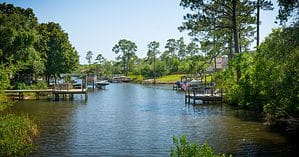There is so much to learn about Yellowstone National Park, including the fact that there is a Yellowstone volcano. More than a simple mountain that spews lava, Yellowstone National Park has a complicated volcanic history that dates back millions of years. But where is the Yellowstone volcano located, and can you see it for yourself on a trip to the park?
In this article, we will address everything there is to know about the volcanic legacy of Yellowstone, including where the volcano (or volcanoes!) is located. We will also go over when Yellowstone last experienced a volcanic eruption or other volcanic activity, and whether or not this volcano will erupt again. Let’s get started!
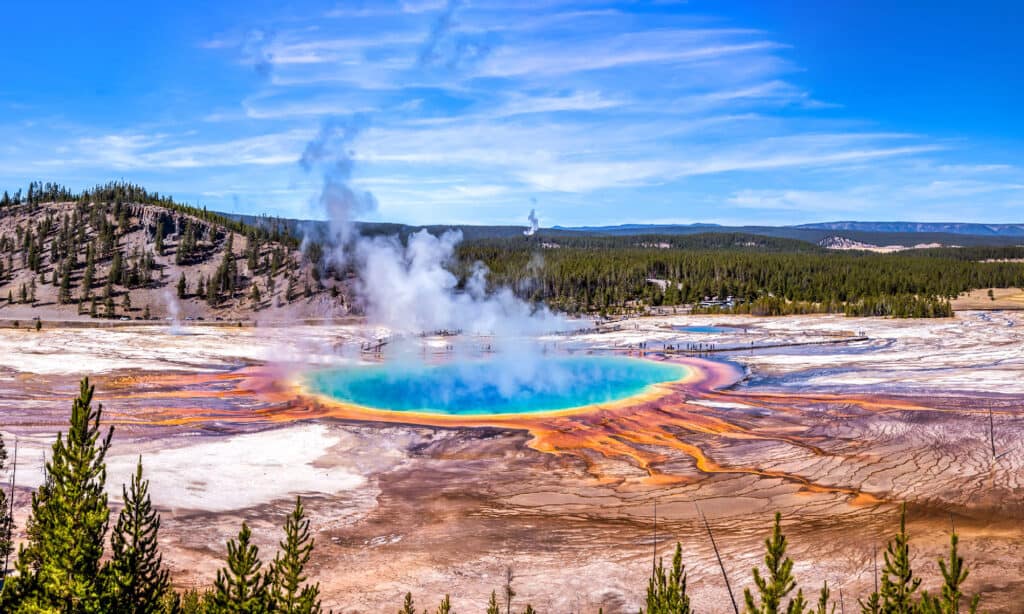
After erupting millions of years ago, Yellowstone’s landscape was entirely formed by volcanic activity.
©Lillac/Shutterstock.com
| Yellowstone National Park | Volcanic Facts |
|---|---|
| First Volcanic Eruption | 2.1 million years ago |
| Size of First Eruption | Nearly 600 cubic miles of debris, making it 6,000 times larger than the Mt. St. Helens eruption! |
| Most Recent Eruption | ~175,000 years ago, with over 50 much smaller eruptions since then |
| Where to See Volcanic Evidence | Firehole Canyon, Lewis Falls, Washburn Hot Springs Overlook, Obsidian Cliff, Gibbon Falls, Tuff Cliff, Sheepeater Cliff |
Does Yellowstone National Park Have a Volcano?
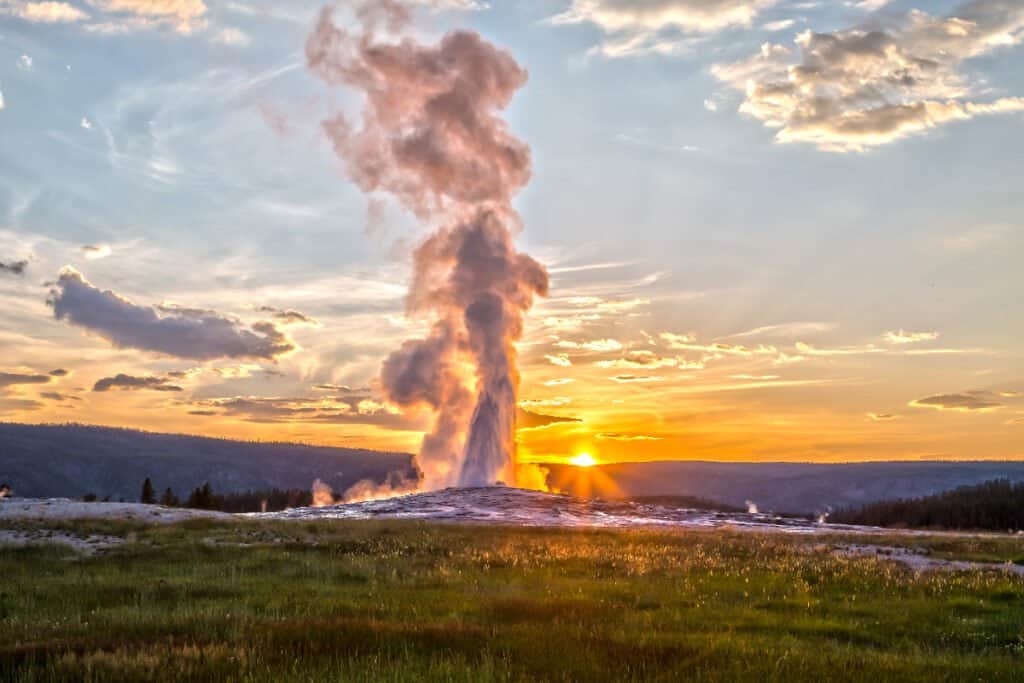
Also known as the Yellowstone volcano, the Yellowstone Caldera is located in the center of the park.
©Susanne Pommer/Shutterstock.com
Yes, Yellowstone National Park technically rests atop a supervolcano. After erupting millions of years ago, Yellowstone’s landscape was entirely formed by volcanic activity. You may not be able to see a tall, imposing, mountainous volcano on your visit, but Yellowstone has significant seismic and volcanic activity year-round!
Where is the Yellowstone Volcano Located?
Also known as the Yellowstone Caldera, the Yellowstone volcano is located in the center of the park. It is roughly 45 miles by 30 miles in size, and this entire region has many volcanic features, including resurgent domes or tops of volcanoes. But where are these domes located, and can you see them for yourself?
One of these two domes is located in Mallard Lake, but it is roughly 6-10 miles in diameter. The same is true for the second resurgent dome, located in Sour Creek. The sheer size of these domes as well as the Yellowstone Caldera itself makes it difficult to take in what it is that you’re seeing!
However, that doesn’t mean that they aren’t worth a look. There are enough hikes in Yellowstone National Park that some of them definitely display a birdseye view of these resurgent domes or the Caldera region itself. Hiking Lake Butte or Mount Washburn may give you the view that you are looking for.
When Did the Yellowstone Volcano Last Erupt?
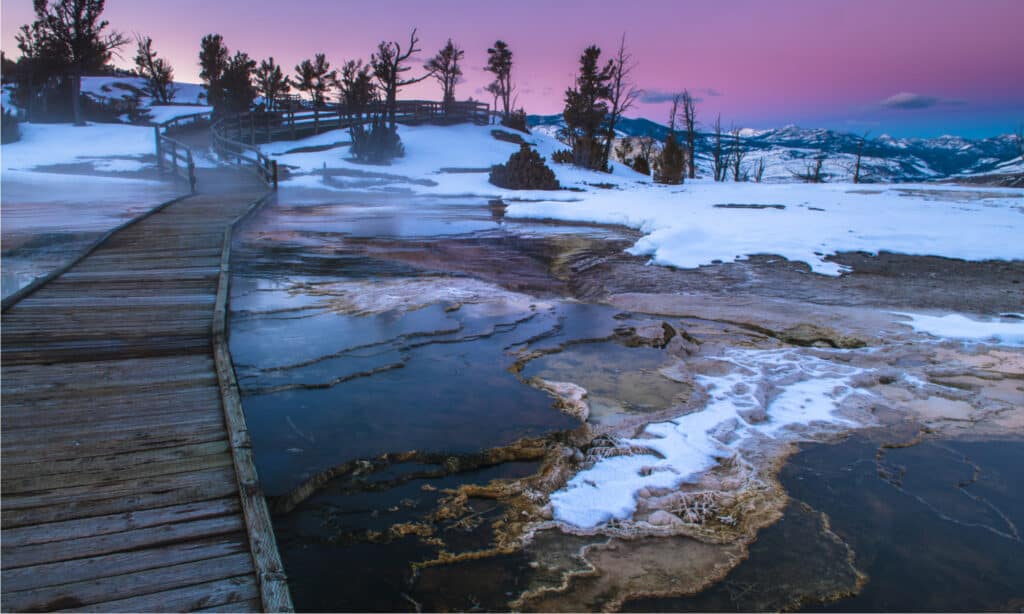
Yellowstone Park Rangers are constantly monitoring any and all volcanic activity throughout the park, and there are many telltale signs of volcanic eruption well in advance of anything harmful happening.
©Kris Wiktor/Shutterstock.com
The Yellowstone volcano last erupted 2.1 million years ago. This eruption ended up spewing nearly 600 cubic miles of debris and ash into the region, some of which you can still look at today in the form of tuff, or volcanic rock. However, this wasn’t the only eruption to occur in this region- not by a long shot!
A second, much smaller eruption occurred roughly 1.3 million years ago, forming another caldera outside of the park’s existing boundaries. But the volcano in Yellowstone wasn’t done yet. A third and larger eruption occurred as recently as 630,000 years ago, and this volcano dumped 240 cubic miles of debris into the region.
Compared to the second eruption of less than 70 cubic miles of debris, the third and final large eruption was one to remember! According to experts, roughly 80 smaller eruptions have occurred since this moment in history, but nothing as powerful as these three.
Will the Yellowstone Volcano Erupt Again?
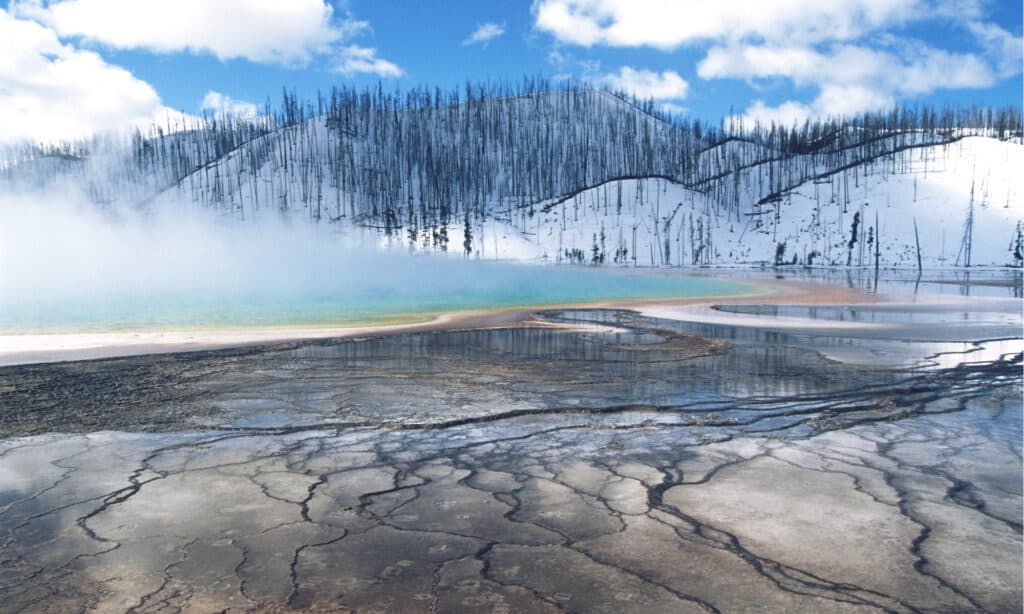
The Yellowstone volcano last erupted 2.1 million years ago.
©sirtravelalot/Shutterstock.com
Technically speaking, yes, the Yellowstone volcano will erupt again. It is still an active volcano, constantly altering the Yellowstone National Park landscape. In fact, due to magma flows beneath Yellowstone Lake, the shoreline has shifted toward the north, as water levels rise in the south.
Besides being able to physically observe the underwater and underground shifting of lava and magma flows, Yellowstone National Park experiences hundreds of earthquakes per year, if not thousands. This is a clear sign of the volatile seismic and volcanic activity possible in this unique and wild region of the world!
However, this is no reason to avoid visiting Yellowstone– quite the opposite! Yellowstone Park Rangers are constantly monitoring any and all volcanic activity throughout the park, and there are many telltale signs of volcanic eruption well in advance of anything harmful happening. Experts suggest that it will be thousands of years before there is another eruption, and they will likely never be as large as the first one ever again!
Where Can I See the Yellowstone Caldera and Volcanic Flows?

Signs of volcanic activity are primarily found in the Yellowstone Caldera region of the park, which occupies a significant portion of Yellowstone.
©Colton Stiffler/Shutterstock.com
There are a number of unique volcanic features to see in Yellowstone National Park, all found in the Yellowstone Caldera region of the park. Some of these features include:
- Basalt
- Ash flow and deposits
- Lava flow
- Tuff (volcanic ash rocks)
- Rhyolite
- Caldera rims, basins, and other features
There are a number of different locations for you to view these features. They are primarily all found in the Yellowstone Caldera region of the park, which occupies a significant portion of Yellowstone. Here’s where you should visit, and what you’re likely to see there!
- Firehole Canyon- lava flows along the Firehole River
- Lewis Falls- close enough to the Caldera rim for a good look
- Washburn Hot Springs Overlook- a fantastic view of the Caldera and a resurgent dome
- Obsidian Cliff- lava flows are possible here
- Gibbon Falls- Check out the Caldera rim from this spot
- Tuff Cliff- unique ash flows and rock formations
- Sheepeater Cliff- beautiful columns of basalt form unique structures
There’s so much more than these locations throughout Yellowstone National Park. The entire area has been formed by volcanic activity, so it’s no wonder that there’s plenty to do should you be planning a trip to Yellowstone!
Where is the Yellowstone Volcano Located on a Map?
The Yellowstone Caldera is located northwest of Shoshone Lake. It is also near Yellowstone Lake and Old Faithful.
The photo featured at the top of this post is © Lillac/Shutterstock.com
Thank you for reading! Have some feedback for us? Contact the AZ Animals editorial team.






